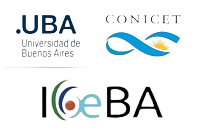Fermin Palma, Sebastián Principi, Juan Pablo Ormazabal, Luana Acosta, José Isola, Donaldo Mauricio Bran, Federico Esteban, Alejandro Tassone
2 024
Deep Sea Research Part I: Oceanographic Research Papers Volume 208, June 2024
Our recent echo-character analysis of the Tierra del Fuego Continental Margin, focusing on Sloggett Canyon and the interfluve with Valentín Canyon, provides insights into contemporary sedimentary processes. Utilizing high-resolution seismic profiles obtained from the R/V Austral in 2017, we categorized sub-bottom echoes into 10 distinct types, shedding light on various processes such as hemipelagic deposition, mass wasting events, glacial influence, and the impact of bottom water masses. By integrating data from the GLORYS12V1 model (1993–2020), CTDs from the World Ocean Database, and sediment samples, we analyze the interaction between bottom currents, seafloor topography, and sediment characteristics. We conclude that the flow of the Subantarctic Water Mass acts as an active transport of coarser sediment from the continental shelf into the canyon, maintaining the Sloggett Canyon's activity, while the flows of the Upper and Lower Circumpolar Water Masses contribute to contourite formation along the eastern canyon flank and the erosion of the lower interfluve, leading to the generation of distinctive longitudinal scours. Additionally, in the continental rise, the interaction of water masses with the seafloor influences the redistribution of the deep-sea fans from the Sloggett and Valentín canyons towards the northeast. This study significantly enhances our understanding of the sedimentary dynamics in this area, establishing the basis of the sedimentary distribution for future interdisciplinary studies and for setting a new baseline in marine protected areas.
